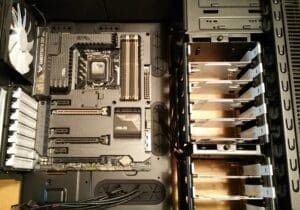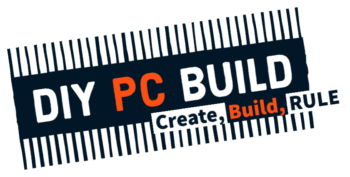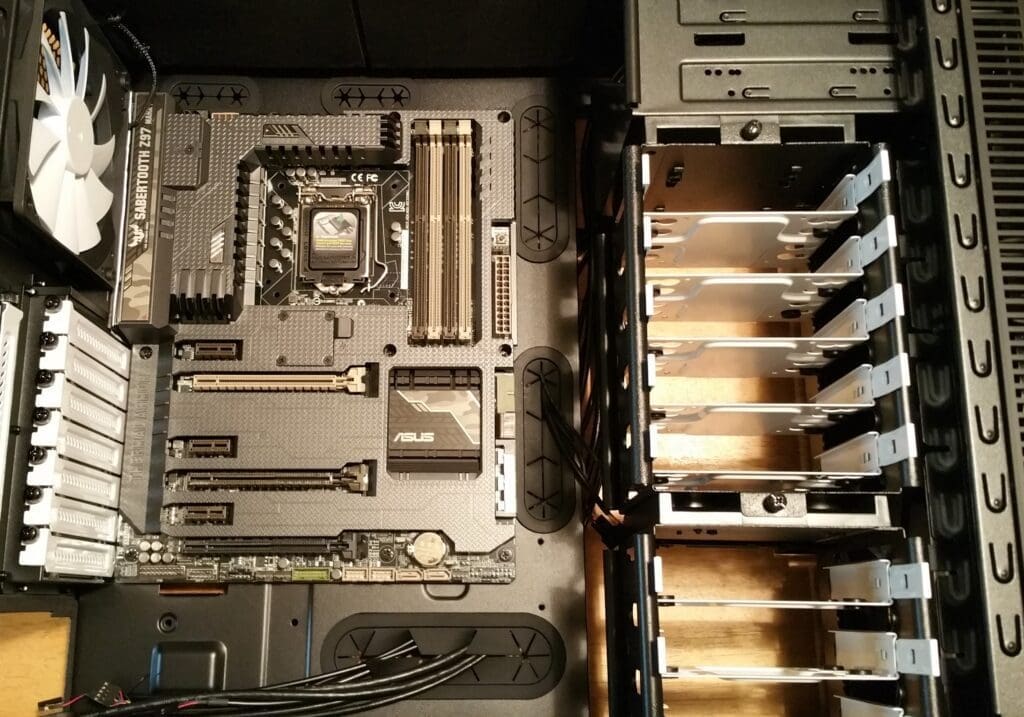
When you build your computer, you need to start someplace. I like to call it the “base”. Just as a structure needs a strong foundation to make it last, when you start building a computer you should be thinking about your needs and what foundation will make it happen – and what will make it last. A good case for your use can last many years beyond your other components if it continues to offer the features or functionality you require.
Where to begin?
As mentioned in our post know what you need from your PC, one of the most important steps in building a computer will be to know what you expect to do with it. If you don’t go through that decision process, you will likely have a computer that doesn’t fit your needs, or you will have one that is overpowered and a waste of money.
The key to where to start building a computer will depend on where you feel you fit as a user. Or, perhaps you will have multiple users on the same computer. In either case, you need to realize what everyone will need to do and go from there.
A basic rule of thumb for making your decisions can be based on user type: Enthusiast, Gamer, Productivity, and General. As mentioned, this is a basic list, and these types can be broken down further (such as Hardcore Gamer, Regular Gamer, or Old School Gamer), which can also affect certain aspects of your build.
User Type, Size Matters
Once you decide which user type fits your situation, you can begin making decisions about the base of your build. Size matters when you factor in what parts you will need.
| User Type | Case Size | Motherboard Size |
| General | Any Size Case | Motherboard that will fit in case of choice. Check case manufacturer specs. Most general user builds are ATX (standard sized boards) or micro ATX, though mini ITX may also be something to consider. Many DIY builders use mini ITX boards for HTC or Home Theater Computers. |
| Productivity | Small and Midsize Cases | Vast selection of Motherboards. Most of these builds will use ATX or micro ATX motherboards. |
| Gamer | Midsize to Large Cases | You’ll likely want a motherboard that can accommodate dedicated graphics card(s) from here on in, which will take up valuable case space. E-ATX and ATX boards will be the type of choice. |
| Enthusiast | Large Cases | An enthusiast may have any number of reasons that puts them in this class. It could be for overclocking their hardware to the max, mining bitcoins, performing scientific calculations. The list can go on. Most enthusiast users require lots of room to accommodate water coolers, multiple GPU’s or Processors. In general many enthusiasts may choose to use E-ATX boards, though standard ATX boards are common too. |
So what if I don’t fit into these types?
Okay, so you don’t consider yourself as belonging to any of the sample user types previously mentioned. There are plenty of sub-classes that could fit under those. Here are some simple guidelines;
- If your build requires many of any particular part, you are likely going to fit under the Enthusiast user
- If your build requires a dedicated graphics card and a mid-range or higher CPU, you are very similar to a Gamer
- If your build requires a decent amount of processor power, system memory, and maybe a low-end dedicated graphics card or good on-board graphics, you are likely going to fall under the Productivity set
- Finally, if your build doesn’t really require anything special but you want to use a computer for homework, browsing websites, checking email, light office work, or even playing around with Linux OS’s, these are all General uses and they don’t require a lot of any specific hardware requirements
Brand Favoritism
User types don’t always determine how to decide on your build. Brand favoritism can also play a large part in your journey. Though the sample user types will hopefully ensure you are giving yourself enough of what you’ll need, you may be concerned about cost, or better yet be caught up in brand favoritism.
There has been a quiet battle raging over the years between Intel and AMD fans. Which side do you fit in? If you don’t know or care, you are likely falling into the General or Productivity user type. If you are part of this battle and “have a favorite”, then you are likely a Gamer or Enthusiast.
This concept does not hold as true as user types, but anybody that knows anything about those companies and the hardware they produce will usually know what they prefer. Or, maybe they are ready to go to the dark side, and try the opposing brand. Your motives are your own.
It may be the more cost effective argument (AMD CPU’s are usually less expensive up front), the cooling argument (Intel CPU’s generally use less power and therefore are easier to cool), or maybe you just like the way they present the product, view benchmark results or like blue more than red.
Whatever your reason for sticking with one over the other, brand favoritism is real and could influence your build more than you think.
Parts to Build a Computer
You need to know what parts will go together to have a working computer. Read our post about the best computer parts list to get started making your list and exploring the parts you’ll need for your build. That post will cover in more detail the basics, additional parts to consider, and accessories you may find of interest.
As we suggest in our parts list post, determining which motherboard you want will greatly make the rest of your parts decision easier. As always you can ask a question if you haven’t found enough information about planning your build.
Remember: to build a computer, you need to:
- Choose your components based on your needs and budget.
- Assemble your components into your computer case.
- Install your operating system and drivers.

